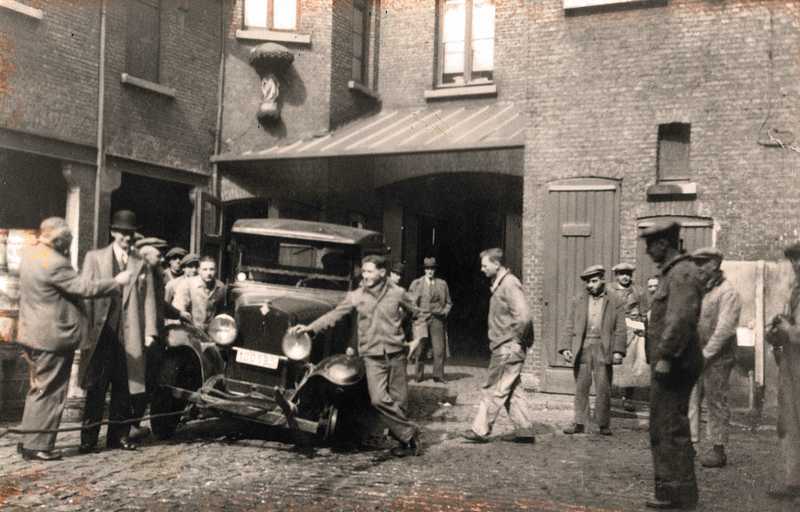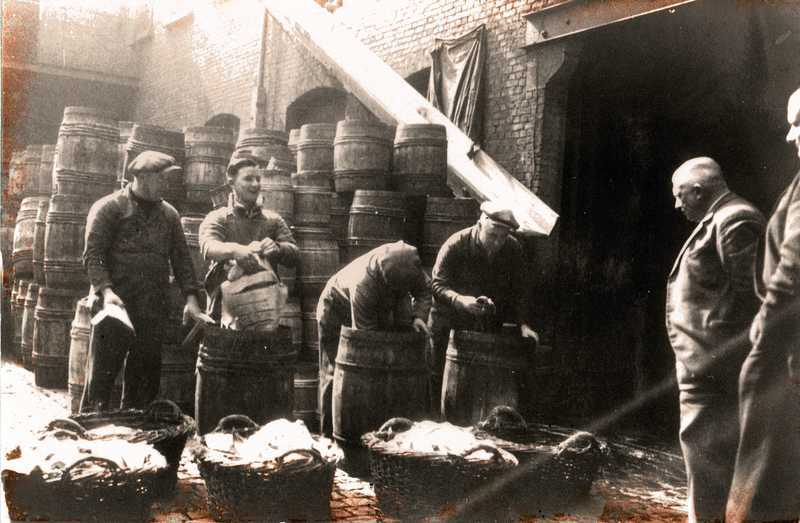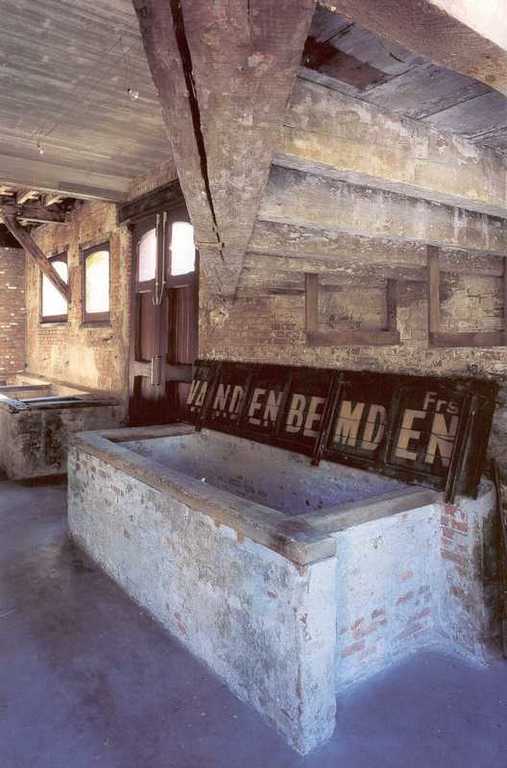The preparation
Large quantities of barrels with fresh fish from Harwich (England) were delivered each morning
straight from the harbour. Initially the delivery was done by horse and cart, later by trucks. After four hours of pickling and cleaning in large concrete tubs in the workshops downstairs the herrings were fastened on pikes by women. After this the men climbed in the smoking chimneys to put all the pikes with the fish on the wooden racks.
The smoking processes
Firstly wood fires on the floor of the chimneys, mainly fed by beech wood shavings, dried out the fish. After five hours the hatches at the top of the chimneys were closed and the smoking of the fish continued for several hours. Different working methods provided the traditional brown herring, the herring for baking, ‘kipper’ or ‘bokking’. After the smoking process the fish was taken out of the racks at the first floor and packaged in wooden crates ready for distribution.
The commercial trade
The cycle of smoking fish continued from early morning until later afternoon. Roughly calculated it involved about 200.000 or more fish per cycle which is about 15 to 20 ton each day. In peak periods the factory was producing day and night. Undoubtedly the company Vanden Bemden was one of the important players in the sector as it was active in distribution and export to other fish smoking factories in Mariekerke, Gent or Charleroi, but also in France and Germany.


